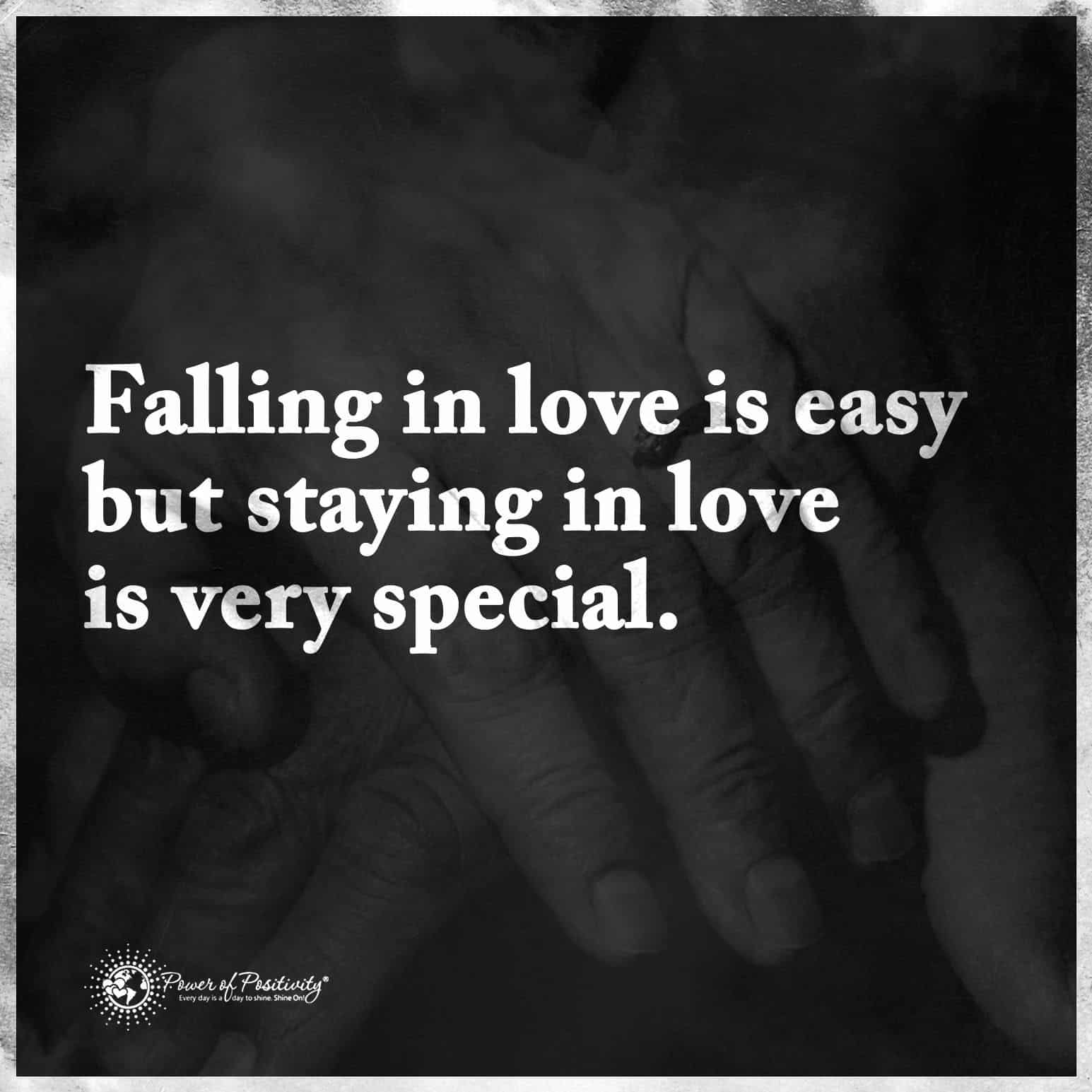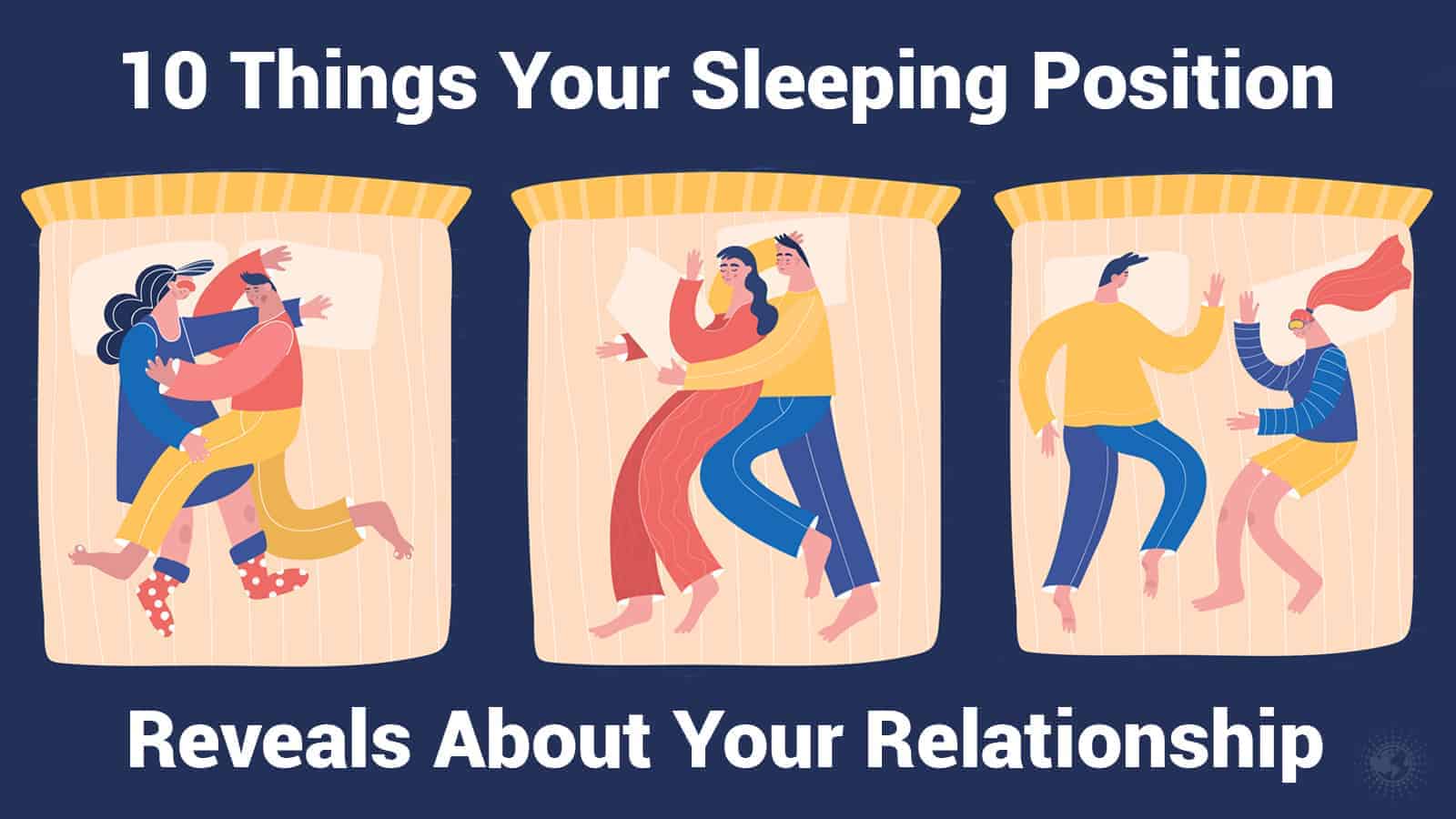What is your preferred sleeping position? Do you and your partner like to snuggle tight, or do you desire to have your blanket and space in the bed? Did you know that how you sleep says a lot about your relationship?
Psychologists have studied the various sleep patterns and their importance in a relationship, and it’s quite a shocking revelation. A study from the University of Hertfordshire in England shockingly found that 68 percent of the people who participated in the research preferred not to touch at all during their slumber.
Of those people who didn’t touch, 94 percent said their relationship was healthy. Could your resting position be a stance, or is there more to it? The article also referenced another study by the University of Chicago. It found that testosterone levels can drop too low when a man doesn’t get enough sleep.
While the studies referenced in this article point out that your sleep position doesn’t matter, other references beg to differ. According to Patti Wood, the author of Success Signals a Guide to Reading Body Language, your body language tells a great deal about your relationship. For instance, those who sleep back-to-back are still connected yet independent.
Ten Things Your Sleeping Position Says About Your Relationship
If you think your relationship is secure, what does your sleeping position determine? Here are the most common positions observed and what they mean for your partnership. Could there be trouble brewing under the covers?
 1. Spooning = Protection
1. Spooning = Protection
Spooning is the most popular sleeping pose, with both big and little spoons. The big spoon is the person that feels like the protector, and in many instances, it’s the man, but that’s not always the case. The little spoon is the one that needs protection.
This bedtime position shows that the little spoon might be vulnerable in the relationship and need to be safeguarded in life. The big spoon feels superior and acts as a protector over the small spoon. This intimate stance provides the couple with the skin-on-skin contact they both crave and the extra TLC and nurturing that the little spoon needs.
2. Back-to-Back = Closeness and Independence
If you fall asleep facing the opposite direction, your backs manage to touch. It’s called the back-to-back position. Your connection is usually at the spine, and your behind may or may not meet. If your bottoms do make contact, it’s called a moon landing, which is an ironic term.
Touching your backsides means that you both have a strong desire to stay connected romantically, but you’re still independent. You don’t need your spouse to define you as strong enough to live with or without them. Couples who prefer this sleeping position have found that they are amazingly comfortable with one another and can relax and just be themselves.
This couple loves each other but values being two separate people. If you and your spouse have recently had an argument and go to this position, there’s still a connection, no matter how hard things are.
3. Sweetheart Cradle = Trust and Teamwork
The sweetheart cradle is a very endearing position. When one partner rests their head on the other person’s chest, they hold each other close. It’s common for the couple to intertwine their legs as they nurture each other.
What stands out most about this position is that the couple is a team, and a superior level of trust exists between them. While snuggling in this position, they both feel romance and protection. Oddly enough, it’s found that new couples prefer to sleep this way, as well as those who have broken up and got back together.
4. Leg Hug = Strong Sexual Connection
Some people are more sexual beings than others, and the leg hug is one way to decipher. When legs and feet are touching, it shows that one person wants or needs more of a sexual or emotional connection with their partner. When legs are tangled, it shows that the two of you are interwoven together as one unit.
5. Both on Stomach = Fear and Anxiety in The Relationship
Not all sleeping positions are favorable. If a couple sleeps apart on their stomachs, it’s a sign of anxiety and fears in their relationship. When there is no touching, it can be an indication of a lack of trust.
If you find that the two of you seem to go to this position, then it’s time to reevaluate your relationship. Your body language speaks louder than words, so you need to talk about what’s happening.
6. No Contact, Back-to-Back = Strong Independence
So, most people will assume that no touching in bed is terrible, but it doesn’t have to be. If a couple can share the same space yet sleep apart, it’s a sign that they both have a strong independent nature. The connected yet self-sufficient lover usually connects back-to-back with no touching involved.
These partners are liberty lovers, as they are both so secure within themselves that they don’t need any extra security from one another. The real problem occurs if one person is sleeping on the edge of the bed, trying desperately to be separate. It’s a sign that they are disconnecting or that the mattress is too small.
7. Pet Barrier = Using Animals to Avoid Issues
Most pet lovers share their intimate space with their furry friends. While it’s not bad, it can cause issues with your spouse if you let them sleep in between you. Your pet will undoubtedly feel your love and devotion towards them, but your partner may feel lax.
It’s commonly a sign that you and your spouse are avoiding an issue in your relationship and using your pet as a buffer for the problem. It’s like the elephant in the room that no one is talking about.
If you must have your pets in your bed, make them sleep around you, not in between. There are newfangled beds made with separate additions for Fido. Plus, if it means your relationship’s health, you should consider letting them sleep with the children or in a cage at night.
Plus, a pet bed beside your bed isn’t a bad idea, either. Not every couple with pets in their bed uses them to bridge the divide, but it happens more often than you would think.
8. Front to Front = A Like-Minded Couple
The front-to-front sleeping position is a variation of being thoroughly intertwined, but you face one another this time. It’s also interesting that most couples keep their heads at the same level. There may or may not be any touching, as some like draping their arms across one another.
This sleeping stance is one of intimacy, and it shows that the two of you are very like-minded people. Plus, there’s a great mood in your relationship as you two enjoy spending time together.
9. The Shingles Position = Compassion and Trust
Both people are sleeping on their backs in this position, but one has their head resting on the other’s shoulder. This stance shows a superior level of camaraderie, and one person allows the other to take the role of the protector. When you sleep like this, it means that there is both compassion and trust in your union.
10. Intertwined = Can’t Get Enough of Each Other
When you and your partner are thoroughly intertwined, you love being close to each other. This is one of the most romantic sleeping positions around. This sleeping style is often observed among new couples, and it’s often used as a transient pose that leads up to or comes after a romantic encounter.
Younger crowds often observe this position, especially when they first start dating. There is so much love between you that you want to be as connected as possible. A couple would rarely continue this pose throughout their entire relationship, but if they do, it’s a sign that they are very reliant upon one another.
 Final Thoughts on Sleeping Positions
Final Thoughts on Sleeping Positions
Have you ever really taken a moment and considered how you and your partner sleep at night? Do you like to snuggle tight or prefer to have your side of the bed with your blanket? There are different opinions on whether these positions have any bearing on a relationship, and some psychologists are divided.
Still, it’s interesting to find your sleeping position on the list and see if it’s accurate for your relationship. Perhaps, you will learn something about you and your spouse you didn’t know, or maybe you will see something underlying that needs to be discussed. Could the way you sleep at night dictate your relationship’s strength, or is this just a useless babble? It’s up to you to decide.





















